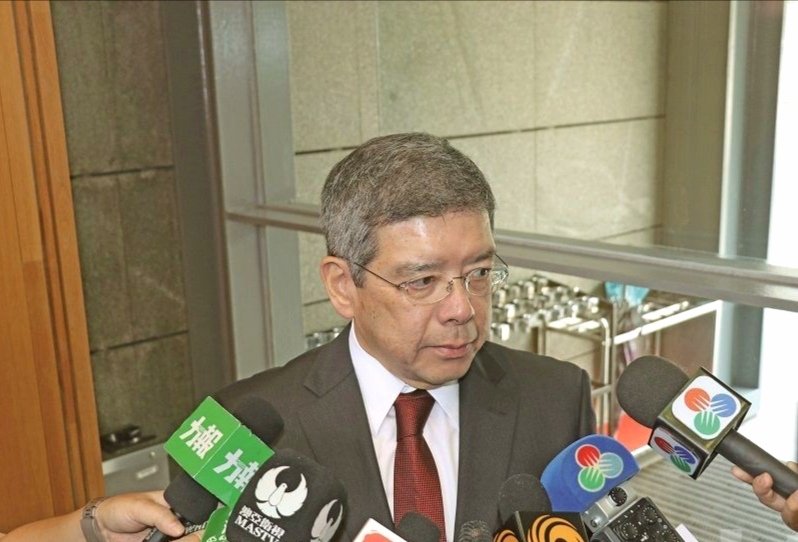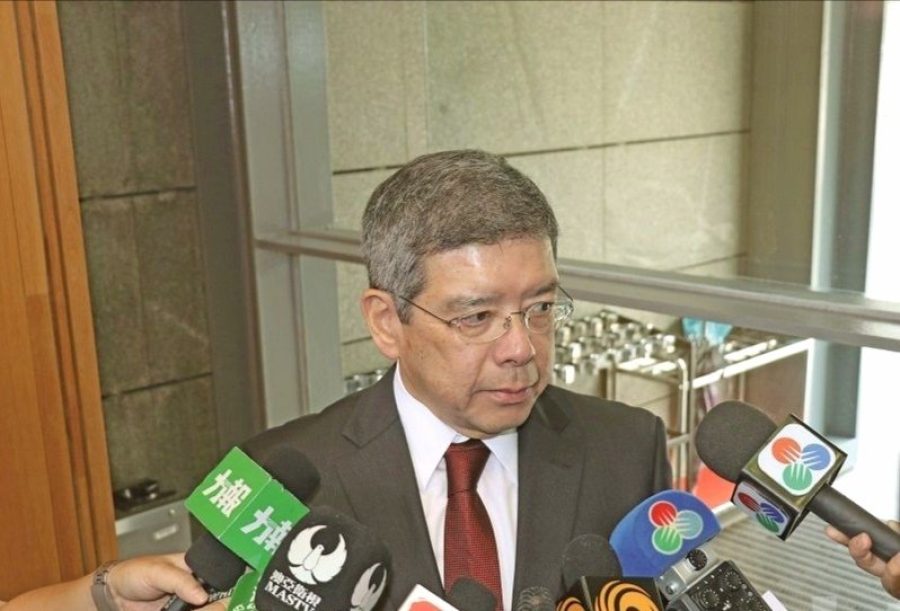Secretary for Transport and Public Works Raimundo do Rosário promised on Sunday that the government will ensure that its ongoing project to build the Light Rail Transit (LRT) section between Taipa and Barra at the southern tip of the peninsula will not affect the structure of Sai Van Bridge.
The Taipa-Barra LRT section will run through the lower enclosed deck of the bridge, which currently has a vehicular lane in each direction for cars and emergency vehicles when typhoon signals No. 8, 9 or 10 are hoisted.
The policy secretary also reiterated on Sunday that the Transport Infrastructure Office (GIT) has issued a statement over the weekend elaborating on the matter of the perceived safety concern of the Taipa-Barra LRT section project – raised recently by the bridge’s principal designer.
Rosário made the remarks while speaking to reporters on the sidelines of the opening ceremony of an exhibition of photographs of Mao Zedong at the Macau Handover Gifts Museum in Nape. (More on p. 3)
Inside & outside lanes
Rosário remarks came after a report by the Chinese-language daily Macao Daily News on Friday, according to which the principal designer of Sai Van Bridge, Xu Gongyi, told the newspaper last week he was surprised that in its Taipa-Barra LRT section project, the government plans to move the existing vehicular lane from the outside lane to the inside lane – which initially was for the LRT tracks to be laid on – in each direction in the lower enclosed deck of the bridge, and plans to build the LRT tracks on the outside lane.
Sai Van Bridge, the construction of which commenced in October 2002, came into service in January 2005.
In the interview with the newspaper, Xu – an engineer of China Railway Major Bridge Reconnaissance and Design Institute which designed Sai Van Bridge, said that the structural design of Sai Van Bridge is for the LRT tracks to be laid on the inside lane and for the outside lane to be used as a vehicular lane. Xu said that the inside lane was constructed in such a way so the LRT tracks could be laid on it. Xu said that laying the LRT tracks on the outside lane would require the installation of new reinforcing steel under the surface of the outside lane. Xu said that this would undermine the integrity of the existing structure of the bridge’s lower enclosed deck.
Xu said that since Sai Van Bridge has been in operation, he comes to Macau once every five years to check the status of the bridge’s structure. Xu, who recently came to Macau to carry out checks on the bridge, told the newspaper that he has submitted a written opinion to the local government opposing the government’s plan to swap the LRT lane and the vehicular lane.
On Friday afternoon, the Transport Infrastructure Office rejected in a statement the remarks reported by the Macao Daily News report, describing the contents of the report as “rumours”. In the Friday statement, the office said that it already explained in a statement in June 2010 the technical feasibility of the government’s plan to construct an LRT section in the lower enclosed deck of Sai Van Bridge. The statement on Friday said that the project to swap the LRT lane and the vehicular lane has been verified by an independent entity as not affecting the safety of the structure of the bridge.
Rosário said on Sunday that the Transport Infrastructure Office has already issued a statement explaining the matter very clearly, adding that the government proposed building the LRT tracks in the lower enclosed deck of Sai Van Bridge almost a decade ago. Rosário acknowledged that if necessary, the government would carry out a review about the project to swap the LRT lane and the vehicular lane, but he was quick to add that now was not the right time to carry out the review, as otherwise he would not have time to handle various other matters, such as to ensure the opening of the LRT Taipa section by the end of this year.
According to the Macau Post Daily, Rosário reaffirmed that the government will always ensure the safety and quality of a LRT section before opening its operation. He reassured the public that the government does not have a sloppy approach towards the LRT project.
The government said last month that it now aims for the Taipa-Barra section to be completed in 2022 or 2023.






